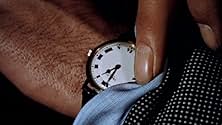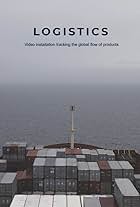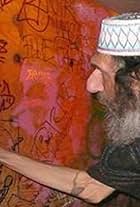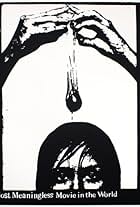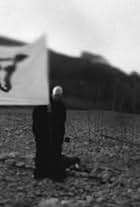Scenes from various films and TV programs that feature clocks, or some verbal mention of time, combine to make a 24-hour timepiece movie.Scenes from various films and TV programs that feature clocks, or some verbal mention of time, combine to make a 24-hour timepiece movie.Scenes from various films and TV programs that feature clocks, or some verbal mention of time, combine to make a 24-hour timepiece movie.
- Awards
- 1 win total
Rosanna Arquette
- Self
- (archive footage)
Bette Davis
- Self
- (archive footage)
Leonardo DiCaprio
- Self
- (archive footage)
William Hurt
- Self
- (archive footage)
Steve McQueen
- Self
- (archive footage)
Marilyn Monroe
- Self
- (archive footage)
Vincent Price
- Self
- (archive footage)
- Director
- Writer
- All cast & crew
- Production, box office & more at IMDbPro
Featured reviews
Perhaps the most staggering, entertaining, addictive, hilarious, mesmerising and exhausting film you'll ever see; probably all of the above in equal parts. It is part film, pastiche, port-manteau, mash-up, and a true a work of art. In The Clock you get exactly what you might expect: images of time, in different forms but all crystal clear. It is a montage of film clips of clocks, watches and depictions of times in the day exactly to the minute. The process of watching such a film is puzzling, what do you start watching, when do you stop (and if you should stop), it is the experience altered depending on what time you come in?
There is a novelty factor watching a film pieced together so precisely so that each clip flows from one to the next; the sound effects and film scores are edited so seamlessly it's hard to one where one film ends and another begins. Someone opening a door transitions to someone in another place, another era, someone steps out of an elevator of ends up of a barge down the river Seine. The film clips ranging from a second to half a minute, sometimes setting up the scene then after inter cut with several other films, returned back to the initial one with that satisfying glimpse of the clock with the time. This is a virtuosic display (if not one of the greatest) of film editing that gives you a glimpse of the staggering task at hand to the director for watching and cutting the hundreds of thousands of film together. Mr Marclay should be commended not just for the fact that was able to pull it off (taking 2 years to complete and several assistant cullers to look for clips), but do it so astoundingly into a cohesive and cogent piece of work.
This sounds incredibly tedious, a film without any plot, story, characters, running non-stop for 24 hours without repetition any explanation about each clip. It is liberating expression of what time means to us as a society and individuals. What does 7 o'clock in the morning mean to most people? Getting up having breakfast, showering, getting ready for work. 10pm is driving back 50 miles to home, on the last errand or getting ready for bed. In a way, it is a documentation of society, although, is it a fictional universe on screen, it is as real as possible to our daily lives and our routine for every each minute of the day.
After some time however a meditative mood (perhaps fatigue) started to set in, and I became less conscious of the images of time because it was always so present, and became more interested in the thematic significance of the time, at the time, whilst being bombarded with hundreds of clips hour; what most people are doing at a set time, and whether the time of day restricts us to certain activities even in a fictitious universe.
I started watching at 10pm on an all-night bender at the Museum of Contemporary Art in Sydney. They only have one 24 hour session a week, so there was an quite an audience amassing on the over-sized leather couches to transfix themselves on this curious experiment, hopefully for the long haul. Some lay on the floor, some reclined over the chairs, some brought snacks and easter eggs to kept them sustained through the night. The beauty was that one could come in and out at any time, return any day of the week and see something completely different. I stayed until 9:30am the next day (I lost track of whether anyone else had, don't think so, probably had a job to go to), sustained through the night by the unpredictably of what I would see in the next minute, next second, in a trance-like mediative state, acutely aware of the time on screen, but unconscious of the fact that I was up at 3:18 in the morning watching random clips of thousands of film across the ages.
I must mention that this is a self-confessed film buffs dream to pick out all the literally hundreds on thousands of film clips from the silent era to the past decade. From F.W Murnau's Nosferatu (1922) to some 60s or 70s film of the RMS Titanic to The Devil Wears Prada (2006). You will see some of your favourite films, and some films you will want to see, if only you could find out what they were! I am now fatigued from my almost 12-hour session but not exhausted; I am strangely exhilarated and invigorated, and eager to get the next opportunity to return to that parallel universe.
There is a novelty factor watching a film pieced together so precisely so that each clip flows from one to the next; the sound effects and film scores are edited so seamlessly it's hard to one where one film ends and another begins. Someone opening a door transitions to someone in another place, another era, someone steps out of an elevator of ends up of a barge down the river Seine. The film clips ranging from a second to half a minute, sometimes setting up the scene then after inter cut with several other films, returned back to the initial one with that satisfying glimpse of the clock with the time. This is a virtuosic display (if not one of the greatest) of film editing that gives you a glimpse of the staggering task at hand to the director for watching and cutting the hundreds of thousands of film together. Mr Marclay should be commended not just for the fact that was able to pull it off (taking 2 years to complete and several assistant cullers to look for clips), but do it so astoundingly into a cohesive and cogent piece of work.
This sounds incredibly tedious, a film without any plot, story, characters, running non-stop for 24 hours without repetition any explanation about each clip. It is liberating expression of what time means to us as a society and individuals. What does 7 o'clock in the morning mean to most people? Getting up having breakfast, showering, getting ready for work. 10pm is driving back 50 miles to home, on the last errand or getting ready for bed. In a way, it is a documentation of society, although, is it a fictional universe on screen, it is as real as possible to our daily lives and our routine for every each minute of the day.
After some time however a meditative mood (perhaps fatigue) started to set in, and I became less conscious of the images of time because it was always so present, and became more interested in the thematic significance of the time, at the time, whilst being bombarded with hundreds of clips hour; what most people are doing at a set time, and whether the time of day restricts us to certain activities even in a fictitious universe.
I started watching at 10pm on an all-night bender at the Museum of Contemporary Art in Sydney. They only have one 24 hour session a week, so there was an quite an audience amassing on the over-sized leather couches to transfix themselves on this curious experiment, hopefully for the long haul. Some lay on the floor, some reclined over the chairs, some brought snacks and easter eggs to kept them sustained through the night. The beauty was that one could come in and out at any time, return any day of the week and see something completely different. I stayed until 9:30am the next day (I lost track of whether anyone else had, don't think so, probably had a job to go to), sustained through the night by the unpredictably of what I would see in the next minute, next second, in a trance-like mediative state, acutely aware of the time on screen, but unconscious of the fact that I was up at 3:18 in the morning watching random clips of thousands of film across the ages.
I must mention that this is a self-confessed film buffs dream to pick out all the literally hundreds on thousands of film clips from the silent era to the past decade. From F.W Murnau's Nosferatu (1922) to some 60s or 70s film of the RMS Titanic to The Devil Wears Prada (2006). You will see some of your favourite films, and some films you will want to see, if only you could find out what they were! I am now fatigued from my almost 12-hour session but not exhausted; I am strangely exhilarated and invigorated, and eager to get the next opportunity to return to that parallel universe.
Is there anyone who has seen this who hasn't been astounded at its brilliance? Mesmerising is the first adjective on most people's lips, and by all accounts it seems that nobody can bring themselves to get up and terminate or interfere with this 24-hour loop experience, except under the duress of necessities such as work and home commitments, hunger, thirst and the need for sleep and toilet pit stops.
It is interesting that after two years this major "film work" should still only have a single review to date on IMDb, and that this second review should like the first be from Australia! I managed to see it over 24hours at a 55-hour opening marathon 17-19/5/12 held (partly to mark World Museums Day) by the Museum of Contemporary Art (MCA) in Sydney's Circular Quay, opposite the Opera House. Get the feeling yet that it has hitherto been seen as a postmodern art "installation",and more akin to art collage than a real landmark of the moving image? It is in fact a profound experience for passionate film lovers, and I am reminded of the splendid end to "Cinema Paradiso", when the reel of parish priest-censured kisses is finally run; "Clock" is about as moving an homage to motion film, with the thousands of snippets taken from at least many hundreds of films serving as a strange "whole life flashing before your eyes" experience for the ardent film lover. So many of the most famous, memorable and important films are represented, interspersed with hundreds more of less known and significant ones; early 1900s film segments mixing with 21st century, B/W with colour, drama with comedy; European with US and Asian; and a roll call of most of the greatest film stars in the last 100 years rubbing shoulders with obscure actors.
This connection with viewers is heightened by the actual "raison d'etre" of "Clock", namely the minute by minute correlation of our universal day with time-stamped scenes in movies, and this aspect of it certainly contributes greatly to its mesmerizing quality and our inability to want to get up and leave - what will happen next in our day? "Clock" is thereby a work of art - or "installation" if you will (finally one that deserves profound respect!) - that deeply relates to all viewers, even without its own footage or storyline or actors. It remarkably finds a connection to our experiences and emotions without even targeting a demographic or knowing who we are in the audience. No doubt that is the hallmark of great art, why this film seems relatively unknown within IMDb - and why it yet deserves admiration here.
A film equally worthy of Museums of Contemporary Art and of fine cinemateques. Well done Christian Marclay and thank you MCA Sydney!
It is interesting that after two years this major "film work" should still only have a single review to date on IMDb, and that this second review should like the first be from Australia! I managed to see it over 24hours at a 55-hour opening marathon 17-19/5/12 held (partly to mark World Museums Day) by the Museum of Contemporary Art (MCA) in Sydney's Circular Quay, opposite the Opera House. Get the feeling yet that it has hitherto been seen as a postmodern art "installation",and more akin to art collage than a real landmark of the moving image? It is in fact a profound experience for passionate film lovers, and I am reminded of the splendid end to "Cinema Paradiso", when the reel of parish priest-censured kisses is finally run; "Clock" is about as moving an homage to motion film, with the thousands of snippets taken from at least many hundreds of films serving as a strange "whole life flashing before your eyes" experience for the ardent film lover. So many of the most famous, memorable and important films are represented, interspersed with hundreds more of less known and significant ones; early 1900s film segments mixing with 21st century, B/W with colour, drama with comedy; European with US and Asian; and a roll call of most of the greatest film stars in the last 100 years rubbing shoulders with obscure actors.
This connection with viewers is heightened by the actual "raison d'etre" of "Clock", namely the minute by minute correlation of our universal day with time-stamped scenes in movies, and this aspect of it certainly contributes greatly to its mesmerizing quality and our inability to want to get up and leave - what will happen next in our day? "Clock" is thereby a work of art - or "installation" if you will (finally one that deserves profound respect!) - that deeply relates to all viewers, even without its own footage or storyline or actors. It remarkably finds a connection to our experiences and emotions without even targeting a demographic or knowing who we are in the audience. No doubt that is the hallmark of great art, why this film seems relatively unknown within IMDb - and why it yet deserves admiration here.
A film equally worthy of Museums of Contemporary Art and of fine cinemateques. Well done Christian Marclay and thank you MCA Sydney!
I blundered into this at the Tate Modern a couple of months ago and am still stunned by what I saw. It is a hypnotic immersion in cinema , yet it is also a functional timepiece.
I await its return to the US, so I can see the 18 hours I missed.
Read about it on Wikipedia. Put it on your bucket list and see it, if you are lucky enough.
It's worth recording that Christian Marclay's masterpiece, first seen at the White Cube in London in 2010, returned to the UK capital in September 2018, this time at the renowned Tate Modern gallery, where it will run until January 2019, on occasion for its allotted 24 hours. We dipped into the private view from 19.15 to 21.15 and intend to return several times in order to view the entire cycle. The content already has been described here but this review was written specifically to confirm that it's mesmerising. Part of the fun is in identifying the unidentified clips - thousands of them - but one is mostly in awe of the amount of research involved in piecing together a visual record of every minute that passes during 24 hours. (Apparently the early hours of the morning were hardest to locate). Marclay took 3 (not 2) years to piece everything together and did so with a team of researchers who trawled through videos. They're all credited at the Tate. The film is of such huge significance because no one who experiences it will ever again see in a film a cut-away of a clock or a watch without thinking, "I wonder if he used that one?" Go to see this film whenever you get the opportunity. For all manner of reasons it will never be available for home viewing.
The Clock is a bold and immersive experimental film that pushes the boundaries of narrative structure and time-based cinema. By combining thousands of clips from movies, television shows, and documentaries, the film creates a 24-hour visual journey, continuously referencing the passage of time, moments of human connection, and existential reflections on mortality. While its innovative approach to editing and montage is impressive, the film's very concept can feel repetitive and somewhat exhausting for viewers not accustomed to such avant-garde methods.
The lack of a traditional storyline or character development may also alienate those who seek a conventional narrative structure. However, for cinephiles or those with a deep appreciation for film history, The Clock serves as a fascinating tapestry of cinematic moments that reflect our collective experience with time, clocks, and the human condition.
Though not a film for everyone, it offers a unique experience for viewers who are willing to embrace its experimental nature and philosophical undertones. Ultimately, The Clock stands as an ambitious work that showcases the power of montage and its potential for transforming the way we engage with the concept of time on screen.
The lack of a traditional storyline or character development may also alienate those who seek a conventional narrative structure. However, for cinephiles or those with a deep appreciation for film history, The Clock serves as a fascinating tapestry of cinematic moments that reflect our collective experience with time, clocks, and the human condition.
Though not a film for everyone, it offers a unique experience for viewers who are willing to embrace its experimental nature and philosophical undertones. Ultimately, The Clock stands as an ambitious work that showcases the power of montage and its potential for transforming the way we engage with the concept of time on screen.
Storyline
Did you know
- TriviaMuseums were given specific instructions on how the film was to be presented. The film was to be projected onto a 21 by 12 foot (6.4 m × 3.7 m) screen in a room with white IKEA couches. The couches needed to staged in such a manner to facilitate coming and going, and no curtains were to be across the entrances to the exhibit.
- ConnectionsEdited from Safety Last! (1923)
- How long is The Clock?Powered by Alexa
Details
- Runtime24 hours
- Color
- Aspect ratio
- 16:9 HD
Contribute to this page
Suggest an edit or add missing content


